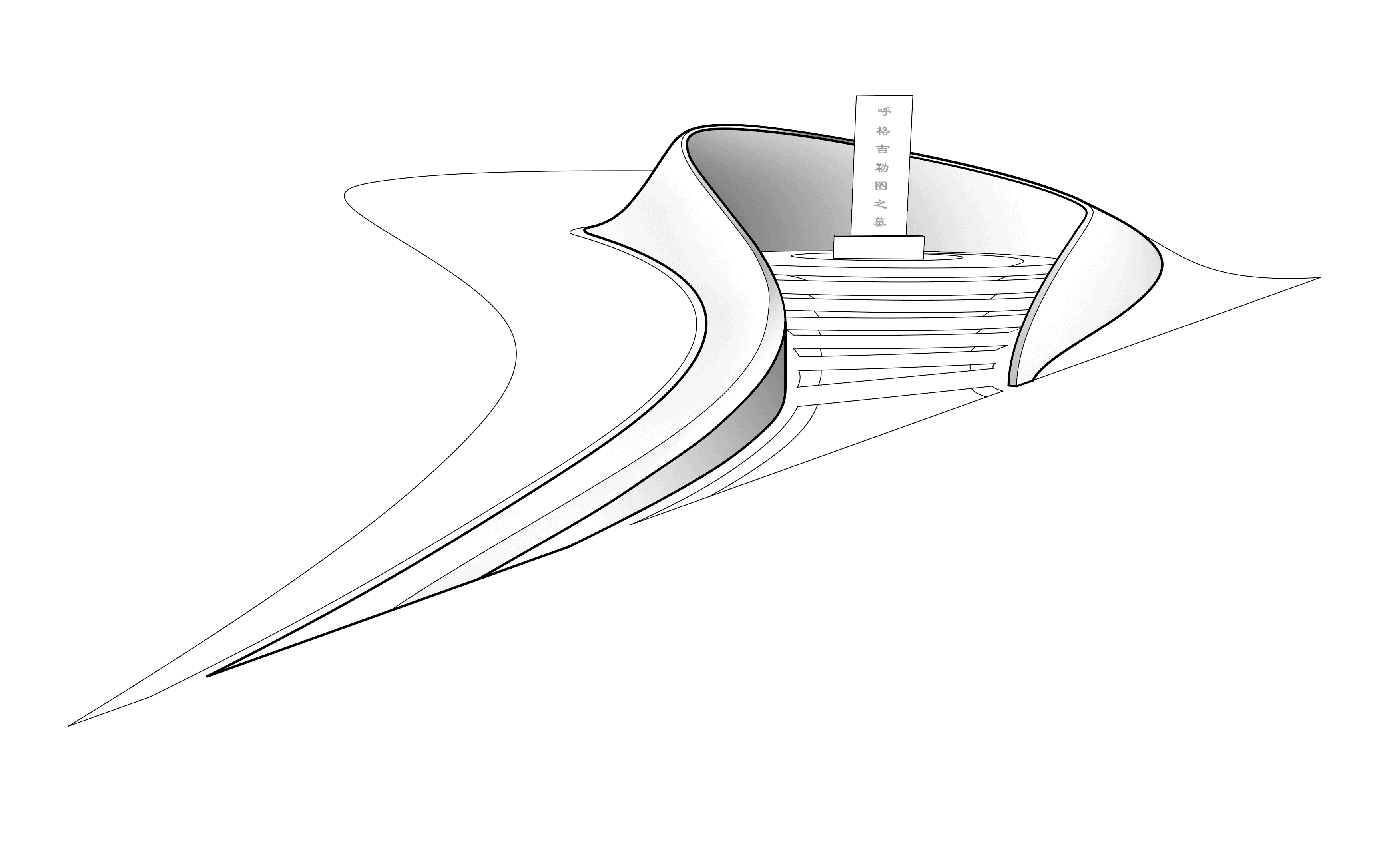




呼格吉��勒图墓碑
Tombstone for Hu’ge Jiletu
The Huugjilt injustice case (1996) is an event that has gained great attention of society in China and has been vindicated after 18 years.
It is the first case since the establishment of New China in which the Public Security Bureau, the Procuratorate and the Court decided to execute the death penalty, and then overturned the case for a person who died unjustly, which is of great significance to the process of new democracy and legal system.


The design is inspired by the twists and turns of the judicial process. So we used a narrative design approach, which the sculptural form of the tomb contains two meanings: like a tear, like a question mark. Huge’s injustice case was concerned by all fields of society been awaiting for over 18 years to redress. Expressing doubts is the original intention of our design, and our sorrow leads the design form turns into a tear.
The outline of the tomb shapes like a ribbon leading to a clue of the case, and finally end into a circle, in Chinese culture completing to a circle means satisfactory. The rust steel plate at the contour memorizing the natural state of color and texture which changes overtime, and visualizing an uncatchable concept of time, guarding the tombstone with warm, and revealing the past.





The three colors of paving stone around the tombstone symbolize three parties include the Police, the Procuratorate, and the court. The outermost ring engraved with the content of the past and voices of the public, expressed the fourth party's rights (public/media).
Obo mound is a traditional Mongolian culture for people to bless the departed by stacking stones into a monument. We reserved a space around the tomb for public participation, where visitors could take a home stone to place around the cemetery, with their voice, thoughts and wishes.





Key Public contributor for Huge's Tomb, includes:
- Jiang Ping, the Master of Chinese law scholars (Author for Huge's Epitaph)
- Tang Ji, journalist of Xinhua News Agency (Promote Huge’s case to redress)
- Wang Yong, professor of China University of Political Science and Law (Adaptor for Huge's Epitaph)
- Zhang Jie, famous Chinese calligrapher (Writer for the Tombstone)
- Liu Junjing, China calligrapher Association (Writer for the Epitaph)
- Zhang Zheng, Contractor and THEZEN team (Sponsor and builder)
- Bai Yu, RIBA/ARB Architect and design team of BAI Design International (Designer for Huge's Tomb)
- Wang Yipeng, journalist of Xinhua News Agency (Participating organizer)
- Cheng Junyu, director for CCTV "Today's Statement" (Participating organizer)